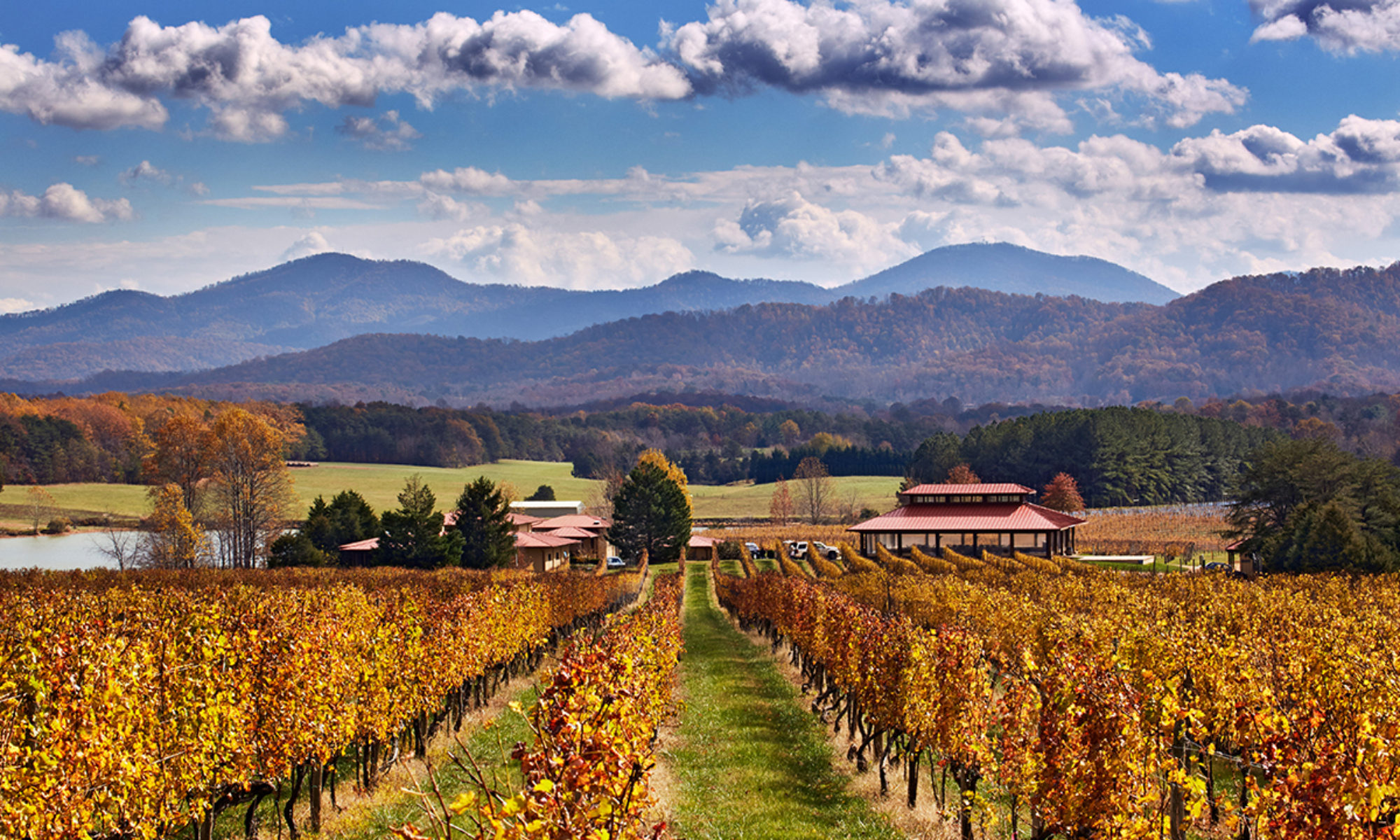Located in aptly named Goodview, Bedford County, north of the village center, and some 20 miles east of Roanoke. The Luedtke family moved here from Illinois, where they had tinkered with backyard wines for several years before finding the old White Rock Winery for sale in 2020. Tom, Pam, son Adam, and daughter-in-law Genny are all-in on the renamed property, which opened its new doors in May 2021. Fables & Feathers is not the easiest place to get to, but you can expect a warm welcome on arrival.
Wine: Tier II. The Winery has not participated in wine tasting competitions. Fables & Feathers has a good range of European-style varietal wines. Reds include a Cabernet Franc, a Chambourcin, a Merlot, a Pinot noir and two red blends. Whites include a Chardonnay, a Riesling, a blend named Sadie’s White, and an unusual Rkatsiteli (a grape from Eastern Europe, grown in only a handful of Virginia vineyards). To say that the wines have “normal” varietal names is however to undersell the Luedtke’s creation. There is nothing “normal” about the bottles the wines come in: You’ll love the wine labels, they are some of the most original and interesting in Virginia. They are designed by co-owner Genny. And with each glass you get a fable. An example from the website: “Once, a dog stole a bone from market and was running home with her prize. As she crossed a pond, she saw another dog with a bone. Being greedy, she growled & barked at the second dog. As her bone sank into her reflection, she realized the bone would have been perfect with a glass of Pinot Noir.” If you want a feather as well as a fable, you have to ask separately.
Setting: One star. Quiet and friendly unless events are ongoing. The property is essentially a large family house, with great views over the vineyards. Indoors the tasting room includes a tasting bar with stools bellied up to a glass cover sitting on top of wine barrels, and a game space with pool table, foosball, and board games. There is a large covered patio and sun room space, and a large outdoor space with tables and umbrellas. The property is also a brewery, although this is not the main focus of the family. Beers on tap rotate frequently.
Stories. Natural Virginia: The Roanoke River. The Roanoke River runs some 10 miles south of Goodview, forming the border between Bedford and Franklin counties. Rising to the west in the Blue Ridge, at Lafayette in Montgomery County, the Roanoke flows over the border into North Carolina, where it finishes its 410-mile journey at Albemarle Sound. The river has played a major role in transportation and history in Virginia and Carolina, and now plays a major role in recreation as well, with its large lakes. The valley of the Roanoke was the homeland for centuries of several Native American tribes, mostly Virginia Siouan, notably the bands of the Occannechi and the Tutelo. The name “Roanoke” is derived from an Algonquian name for wampum, which was also the name given by the settlers of the ill-fated 1584 “Lost Colony” of Roanoke Island, in present-day North Carolina. The river had its name long before the today-better known city: what was then the small town of Big Lick, on the river, became in 1883 the terminus of the new Norfolk and Western Railway, and was only then re-named Roanoke. On its way down from the Blue Ridge and over the Fall Line, the Roanoke was long prone to deadly flooding. Record floods following a major hurricane in 1940 prompted calls for dams to be constructed along the river to attempt to reduce the intensity of the floods. The John Kerr Dam was completed in 1953, the largest of what are now six dams along the Roanoke, created for both flood control and hydro-electric power generation. The furthest upstream and earliest of the dams is the Niagara, some 12 miles west of Goodview, which was created back in 1906 as a source of power for the now-defunct Roanoke Electric Car streetcar system – perhaps it will again power electric cars in the not-too-distant future. Major recreational lakes, Kerr Lake and Smith Mountain Lake, are both the products of dams along the Roanoke. For part of its course in Virginia, the river is better known by the name of the Staunton River. Today its middle sections and floodplain in North Carolina form the object of a major nature conservancy campaign, seeking to preserve the largest intact and least-disturbed bottomland hardwood forest ecosystem remaining in the mid-Atlantic region, alluvial forests and large backswamps, and vast tracts of bald cypress and water tupelo swamp forests.
